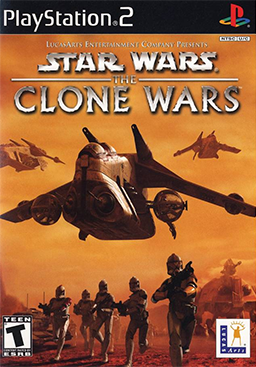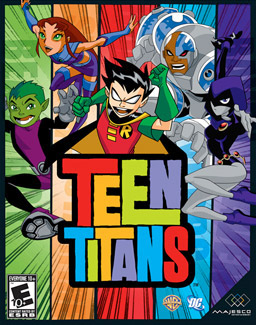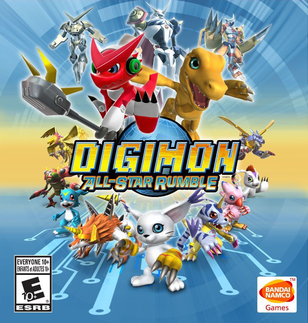
Star Wars Jedi Knight II: Jedi Outcast is a 2002 first- and third-person shooter video game. The Microsoft Windows was developed by Raven Software, the Mac OS X version by Westlake Interactive, and the Xbox and GameCube versions by Vicarious Visions; most versions were published by LucasArts, with only the Mac version published by Aspyr. The game is a sequel to 1997's Star Wars Jedi Knight: Dark Forces II, and the third main installment in the Star Wars: Jedi Knight series. The single-player campaign, set in the fictional Star Wars expanded universe two years after the Mysteries of the Sith expansion for Dark Forces II, follows returning protagonist Kyle Katarn, a mercenary working for the New Republic and former Jedi who cut his connection to the Force. Katarn must return to his Jedi ways to stop a branch of the Imperial Remnant led by the Dark Jedi Desann from empowering their army with the Force.
In the history of video games, the sixth generation era is the era of computer and video games, video game consoles, and handheld gaming devices available at the turn of the 21st century, starting on November 27, 1998. Platforms in the sixth generation include consoles from four companies: the Sega Dreamcast (DC), Sony PlayStation 2 (PS2), Nintendo GameCube (GC), and Microsoft Xbox. This era began on November 27, 1998, with the Japanese release of the Dreamcast, which was joined by the PlayStation 2 on March 4, 2000, the GameCube on September 14, 2001 and the Xbox on November 15, 2001, respectively. On March 31, 2001, the Dreamcast was among the first to be discontinued. Xbox in 2006, GameCube in 2007 and PlayStation 2 was the last, in January 2013. Meanwhile, the seventh generation of consoles started on November 22, 2005, with the launch of the Xbox 360.

James Bond 007: Nightfire is a 2002 first-person shooter video game published by Electronic Arts for the GameCube, PlayStation 2, Xbox and Microsoft Windows, with additional versions released for the Game Boy Advance in 2003, and the Mac OS X in 2004. The computer versions feature modifications to the storyline, different missions and the removal of driving sections used in home console versions.

Star Wars: The Clone Wars is a video game set in the Star Wars universe developed by Pandemic Studios and published by LucasArts for GameCube, PlayStation 2 and Xbox. It consists mostly of vehicular combat using clone warships, starfighters, speeder bikes and tanks, as well as missions where players can control Anakin Skywalker, Obi-Wan Kenobi, or Mace Windu on foot. The game is set in the Star Wars prequel trilogy era, with the first level encompassing the Battle for Geonosis from Episode II: Attack of the Clones. The game also features multiplayer modes for up to four players in splitscreen, or online via Xbox Live for the Xbox. It holds aggregate scores of 73 out of 100, 72 out of 100 and 71 out of 100 on review aggregator Metacritic for the GameCube, PlayStation 2, and Xbox, respectively.

Need for Speed: Hot Pursuit 2 is a 2002 racing video game, the sixth installment in the Need for Speed series and the sequel to 1998's Need for Speed III: Hot Pursuit. It was developed by EA Black Box for the PlayStation 2, and by EA Seattle for GameCube, Xbox, and Microsoft Windows. It features cars from various high-performance and exotic car manufacturers. Players can compete in races using these cars, or opt to play as a police officer and pursue speeders.

Harry Potter and the Goblet of Fire is a 2005 action-adventure video game published by Electronic Arts. It is based on the 2005 film of the same name.

Digimon World 2 is a dungeon crawler video game developed by BEC and published by Bandai for the PlayStation as part of their Digimon series. It is the sequel to the original Digimon World, and was released in Japan in July 2000 and North America the following year in May 2001. The player controls Akira, a Digimon Tamer whose goal is to climb to the top of the Digimon World.

Digimon World 3, also known as Digimon World 2003 in Europe and Australia, is a role-playing video game for the PlayStation developed by BEC and Boom Corp, and published by Bandai. It is the third installment in the Digimon World series and it was first released in June 2002 in North America and then in July 2002 in Japan and November 2002 in Europe. The game tells the story of Junior, who begins playing an MMORPG called "Digimon Online" with his friends, but when terrorists attack, Junior and the other players are trapped within the game and must find a way out using his Digimon partners.

NBA Live 06 is a 2005 installment of the NBA Live series released on the Xbox, Xbox 360, GameCube, Microsoft Windows, PlayStation Portable, PlayStation 2 and Mobile. It was developed by EA Sports. The game features several game modes, including Dynasty, Season, Playoffs, or Free Play. It features Dwyane Wade of the Miami Heat on the cover. This was the last NBA Live game on the GameCube and it also was the first NBA Live game on the Xbox 360 as a launch title and on the PlayStation Portable.

Digimon Rumble Arena is a 2001 fighting video game developed and published by Bandai. It is part of a video game series connected to the Digimon franchise and showcases the titular creatures within the context of a fighting video game. The player controls one of several Digimon and engages in combat with other Digimon within a variety of settings. Apart from the central fighting gameplay, a trio of mini-games are available upon the single-player campaign's completion.

Digimon Rumble Arena 2, known as Digimon Battle Chronicle in Japan, is a 2004 Digimon fighting video game, released by Bandai for the PlayStation 2, GameCube, and the Xbox. It is the sequel to 2001's Digimon Rumble Arena and has a similar style of gameplay as Super Smash Bros. Melee, except with a health meter. Digimon All-Star Rumble, a spiritual successor to the Rumble Arena games, was later released in 2014.

Digimon Racing is a racing video game developed by Griptonite Games and published by Bandai for the Game Boy Advance. Part of the Digimon media franchise and video game series, it utilizes Digimon's characters and elements. Its gameplay largely resembles that of traditional racing games, but also utilizes elements of kart racing and action games. Its eleven playable characters can be increased to over 40 via Digivolution.

Dr. Muto is a 2002 platform game developed by Midway Games West. It was released for the PlayStation 2 and Xbox on November 11, 2002 and later released for the GameCube on December 17, 2002. An entirely different game with the same name was developed by Digital Eclipse and released for the Game Boy Advance on March 21, 2003. This is the last game designed by Ed Logg.

Chicken Little is a 2005 action-adventure game developed by Avalanche Software for GameCube, Microsoft Windows, PlayStation 2 and Xbox and by Artificial Mind and Movement for the Game Boy Advance; both were published by Buena Vista Games. Based on the 2005 film Chicken Little, they were released in October 2005.

The Digital Monster is a digital pet created by WiZ and Bandai that spawned the Digimon franchise. It was released by Bandai on June 26, 1997, in Japan and on December 5, 1997 in North America. This pet was a masculine counterpart to the Tamagotchi, which was deemed more appropriate for girls. It was similar to earlier virtual pets with the distinctions of being a fighting pet that could connect with others like it.

Digimon World Data Squad is an action-adventure role-playing video game for the PlayStation 2, developed by BEC and published by Bandai Namco Games. The title was released in Japan in November 2006, and later in North America in September 2007, and is based on the Digimon Data Squad anime series. It is not part of the Digimon World series of games as its localized title implies.

Digimon World Dawn and Digimon World Dusk, originally released as Digimon Story Sunburst & Moonlight in Japan, are two role-playing video games for the Nintendo DS handheld game console released in Japan on March 29, 2007 and North America on September 18, 2007. Together, they serve as the second instalment of the Digimon Story series, part of the larger Digimon franchise. Despite their western title, the games are not part of the Digimon World series.

Teen Titans is an action beat 'em up video game released in 2006 for the GameCube, PlayStation 2, and Xbox. A game under the same name was released for the Game Boy Advance on October 16, 2005. They were developed by Artificial Mind and Movement and published by THQ in conjunction with Majesco Entertainment. The game is themed after the 2003 Cartoon Network TV series Teen Titans, and most of the original voice actors reprise their respective roles.

Digimon All-Star Rumble is a fighting video game developed by Prope and published by Bandai Namco Games for the PlayStation 3 and Xbox 360 video game consoles. The game is part of the Digimon franchise and features characters from across its several iterations. It was released in November 2014 in North America, Europe and Australia.

Digimon Survive is a visual novel with tactical role-playing game elements developed by Hyde and published by Bandai Namco Entertainment for Nintendo Switch, PlayStation 4, Windows, and Xbox One.




















